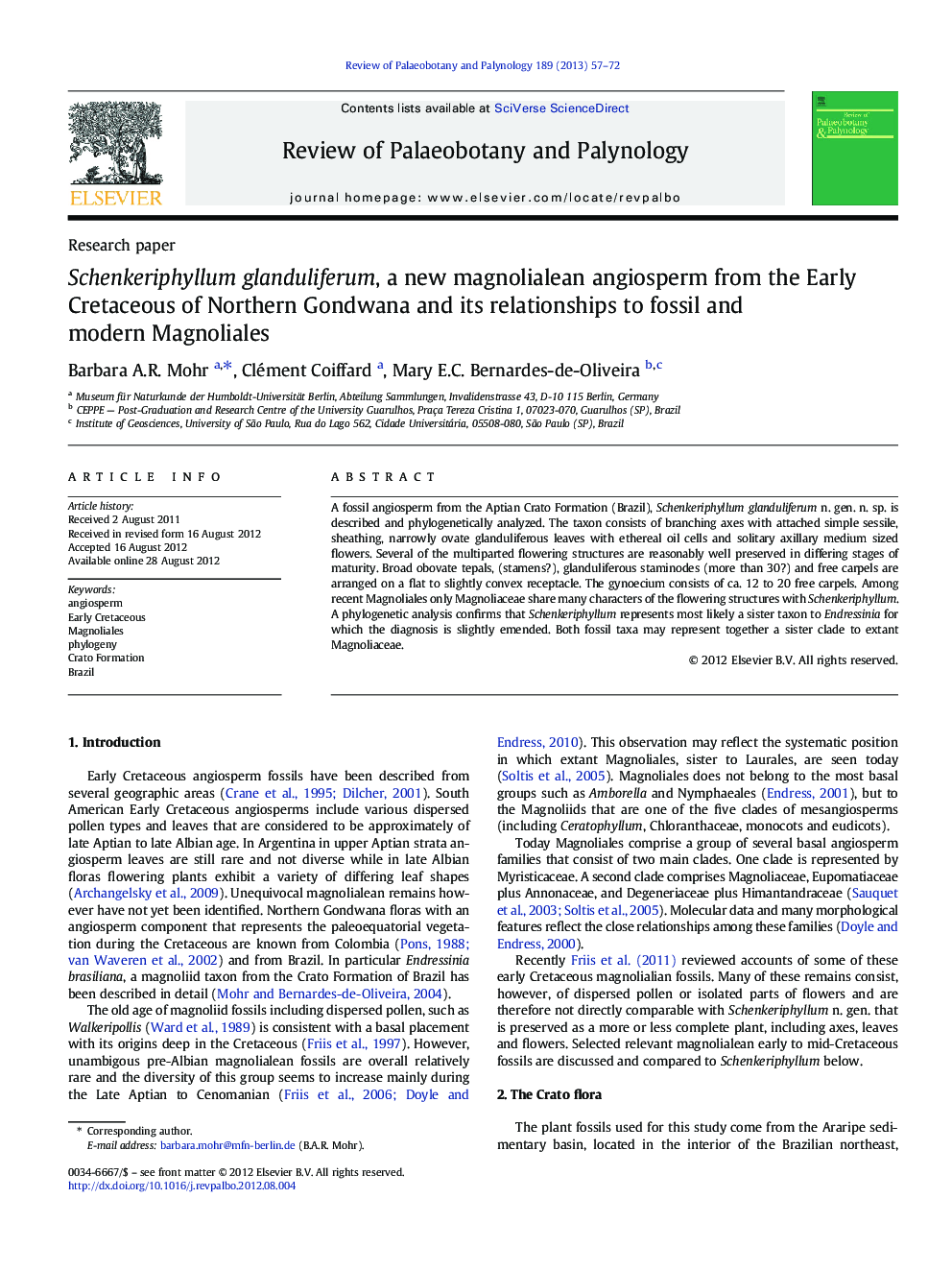| Article ID | Journal | Published Year | Pages | File Type |
|---|---|---|---|---|
| 4750346 | Review of Palaeobotany and Palynology | 2013 | 16 Pages |
A fossil angiosperm from the Aptian Crato Formation (Brazil), Schenkeriphyllum glanduliferum n. gen. n. sp. is described and phylogenetically analyzed. The taxon consists of branching axes with attached simple sessile, sheathing, narrowly ovate glanduliferous leaves with ethereal oil cells and solitary axillary medium sized flowers. Several of the multiparted flowering structures are reasonably well preserved in differing stages of maturity. Broad obovate tepals, (stamens?), glanduliferous staminodes (more than 30?) and free carpels are arranged on a flat to slightly convex receptacle. The gynoecium consists of ca. 12 to 20 free carpels. Among recent Magnoliales only Magnoliaceae share many characters of the flowering structures with Schenkeriphyllum. A phylogenetic analysis confirms that Schenkeriphyllum represents most likely a sister taxon to Endressinia for which the diagnosis is slightly emended. Both fossil taxa may represent together a sister clade to extant Magnoliaceae.
► Schenkeriphyllum glanduliferum is a new Early Creteaceous angiosperm taxon. ► A cladistic analysis shows a sister relationship to Magnoliaceae. ► The taxon has several characters indicating adaptations to seasonal drought.
